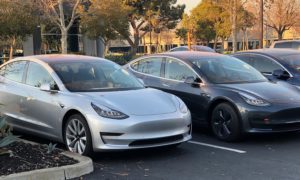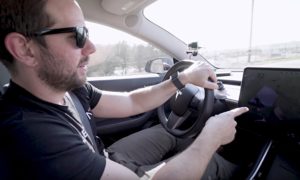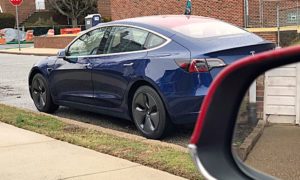News
Should I Buy the Tesla Model S P85 or Standard 85kWh?
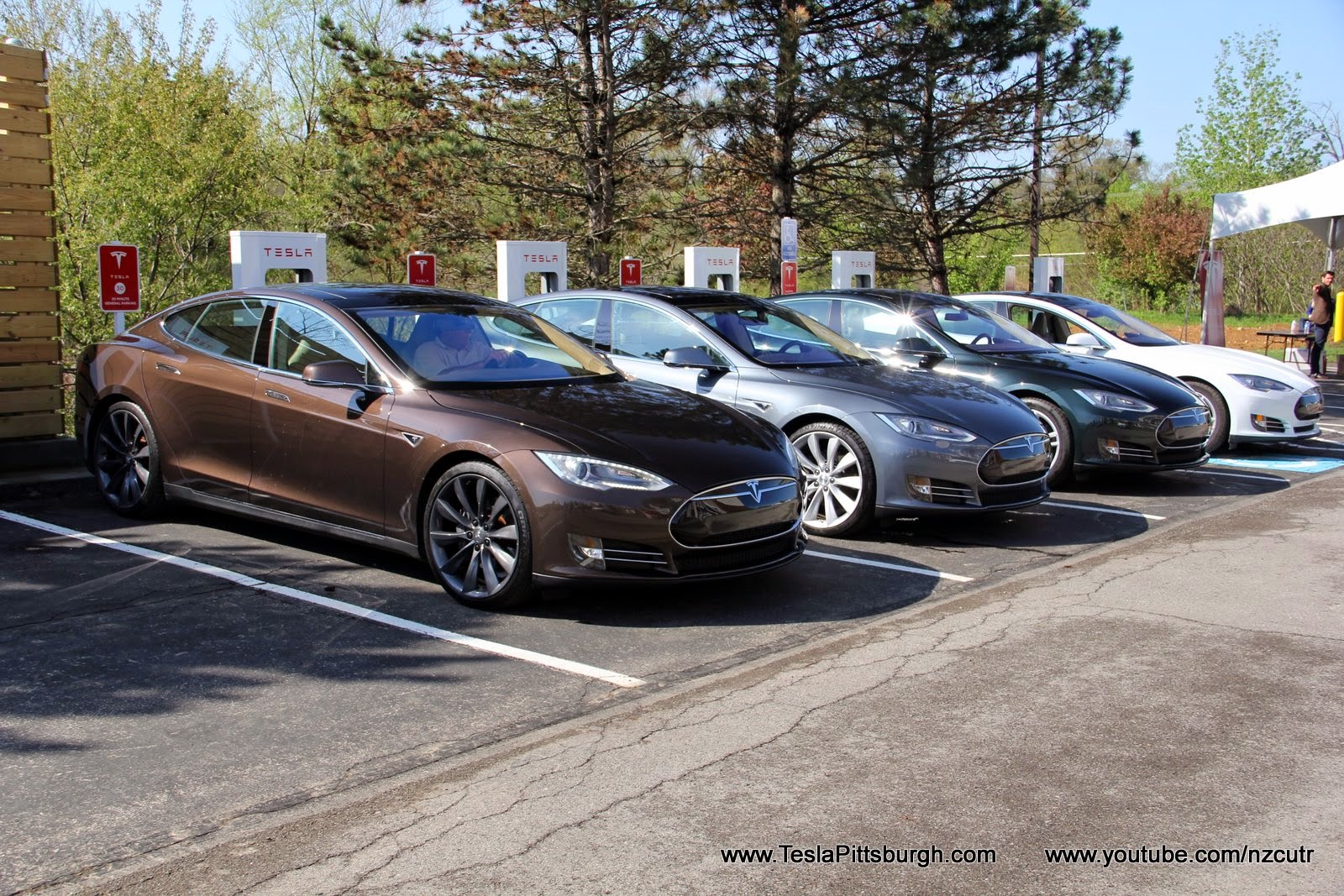

It is, perhaps, the biggest question many prospective hand-wringing owners of the Model S wrestle with – should I get the Tesla Model S P85 or stick to the Standard version?
After all, once you’ve talked yourself up the first $10k from a 60kwh to an 85kwh battery, what’s another $12K or so for the Performance version?
And if you don’t pay for the upgrade to the more powerful drivetrain, WILL YOU REGRET IT LATER?! Want to know the bottom line? My journey to owning the Model S led me to ask the following questions: Will you regularly drive over 180 miles/day? Will you use the Tesla for a road trip car? If the answer to both those questions is “No”, get the 60 kWh. Period. Done.
 The 60 has comparable real world performance to the 85 and reportedly feels even more spirited because of less battery weight (though ballasted to match an 85, the ballast is apparently located differently somehow, according to reports from people who have driven both). The 60 is a superb in-town commuter car or medium distance tourer (with destination charging). If either those questions are answered with a “Yes”, get the 85kWh. By the time you pay the extra $2k to enable the Supercharging option on a 60 you’ve already started toward an 85 anyway. Like the evil dojo master in Karate Kid said, “Finish him!” Get an 85. Now don’t go crazy right to the P85+, let’s look at the upper extreme first.
The 60 has comparable real world performance to the 85 and reportedly feels even more spirited because of less battery weight (though ballasted to match an 85, the ballast is apparently located differently somehow, according to reports from people who have driven both). The 60 is a superb in-town commuter car or medium distance tourer (with destination charging). If either those questions are answered with a “Yes”, get the 85kWh. By the time you pay the extra $2k to enable the Supercharging option on a 60 you’ve already started toward an 85 anyway. Like the evil dojo master in Karate Kid said, “Finish him!” Get an 85. Now don’t go crazy right to the P85+, let’s look at the upper extreme first.
The P85+ is apparently designed solely for the purpose of destroying tires – rear tires – every 5,000 miles or less. Unless you’re coming from a high performance car or plan to enjoy track days, fuggeddaboutit. It’s basically an even more expensive version of the P85 with staggered tires and other suspension tricks. Real world, this is overkill and more about badge ego than useful value (for the vast majority of non-professional racing drivers).
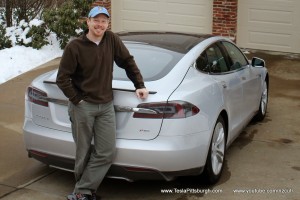 Speaking of real world, the performance difference for the P85 and the S85 exists primarily in one place: 0-30mph. That’s it. From 30mph and up they are virtually identical and both will silently roar around slower traffic with equal capability. Originally the Tesla Model S P85 upgrade only came with some other standard features that are a mixed bag (to me). Thankfully Tesla has decided to allow buyers the option of upgrading only the drivetrain. Still, that presents some problems. A P85 with the 19″ wheels just overwhelms them. Remember the only performance advantage it has is 0-30mph and that requires grip to actually enjoy it. For a variety of reasons (but chief among them rolling resistance and wind resistance) Tesla’s tires are taller rather than wider to increase their contact patch. A traditional sports sedan would get wider tires to increase grip but the Model S gets taller tires… ergo, a P85 on 19s just bounces off the traction control constantly. In a sunny climate that might not happen as often but here in pothole country you’ll get clunks and shudders from way back there at the wheels all the time as the traction control tries to reign in your lunacy. My friend Jake and I had several days with a silver loaner (read more about it here) and it was fun but also frustrating.
Speaking of real world, the performance difference for the P85 and the S85 exists primarily in one place: 0-30mph. That’s it. From 30mph and up they are virtually identical and both will silently roar around slower traffic with equal capability. Originally the Tesla Model S P85 upgrade only came with some other standard features that are a mixed bag (to me). Thankfully Tesla has decided to allow buyers the option of upgrading only the drivetrain. Still, that presents some problems. A P85 with the 19″ wheels just overwhelms them. Remember the only performance advantage it has is 0-30mph and that requires grip to actually enjoy it. For a variety of reasons (but chief among them rolling resistance and wind resistance) Tesla’s tires are taller rather than wider to increase their contact patch. A traditional sports sedan would get wider tires to increase grip but the Model S gets taller tires… ergo, a P85 on 19s just bounces off the traction control constantly. In a sunny climate that might not happen as often but here in pothole country you’ll get clunks and shudders from way back there at the wheels all the time as the traction control tries to reign in your lunacy. My friend Jake and I had several days with a silver loaner (read more about it here) and it was fun but also frustrating.
Unfortunately, if you’re living anywhere with four seasons you are NOT going to want to alleviate the traction problem by getting 21″ wheels. We have potholes. LOTS of them. BIG ones. And bridges with expansion joints that will turn those wheels into ovals. You know how when you go to the grocery store you always get a cart with that annoying wobbly wheel? Would you like to buy one for $90-100K? I didn’t think so. Speaking of expenses, many P85 owners report higher than average tire wear (regardless of wheel size).
I don’t know of a true head-to-head drag race video of all THREE versions of the Model S (60/85/P85)– amazed no one has done it yet– but the video above is very recent and posts a time faster than the Tesla website does. You can read more opinions on that video HERE.
Another recent video does offer a head-to-head of a standard Tesla Model S P85 vs S85 and you can see that after the first 30 feet or so, the S85 and the P85 match stride-for-stride. In fact, at the end of the 1/4 the trap speed on the standard 85 is actually higher. Skip ahead 26 seconds to catch the Tesla family feud.
One long-time P85 owner asserts the difference in launch speed really only exists at higher states of charge. As a result, maintaining that performance edge over the S85 requires more frequent and fuller charges of the main pack, potentially increasing long-term degradation. Ironically, the only times you really should charge the pack up to higher levels (for distance), you wouldn’t want to enjoy the harder launches because it would adversely affect your range.
So the S85 is a tad slower off the line. No one but a P85 owner is ever going to know that. And, frankly, the power delivery at launch is a lot smoother. The P85 is pretty brutal. Oh, it’s damn impressive– but it’s also jarring. I like the slightly tapered building on of WHOOSH that I get from the S85. I think it keeps my wife from realizing how often I’m toying with the other cars around us. James Bond, after all, wears a suit… not a karategi. <— brought that back to Karate Kid nicely, didn’t I? I have no idea why either.

Clearly I could go on and on about my configuration thought processes– and how they’ve evolved since taking delivery– but that’s a topic for another time. If you haven’t already read about my “Journey to Tesla” then check it out for some insights into how I got this car in my driveway and how you can too. It starts by clicking RIGHT HERE.
Read more at www.TeslaPittsburgh.com and check out the videos on our YouTube channel at www.YouTube.com/NZCUTR.
Elon Musk
Why Tesla’s Q3 could be one of its biggest quarters in history
Tesla could stand to benefit from the removal of the $7,500 EV tax credit at the end of Q3.

Tesla has gotten off to a slow start in 2025, as the first half of the year has not been one to remember from a delivery perspective.
However, Q3 could end up being one of the best the company has had in history, with the United States potentially being a major contributor to what might reverse a slow start to the year.
Earlier today, the United States’ House of Representatives officially passed President Trump’s “Big Beautiful Bill,” after it made its way through the Senate earlier this week. The bill will head to President Trump, as he looks to sign it before his July 4 deadline.
The Bill will effectively bring closure to the $7,500 EV tax credit, which will end on September 30, 2025. This means, over the next three months in the United States, those who are looking to buy an EV will have their last chance to take advantage of the credit. EVs will then be, for most people, $7,500 more expensive, in essence.
The tax credit is available to any single filer who makes under $150,000 per year, $225,000 a year to a head of household, and $300,000 to couples filing jointly.
Ending the tax credit was expected with the Trump administration, as his policies have leaned significantly toward reliance on fossil fuels, ending what he calls an “EV mandate.” He has used this phrase several times in disagreements with Tesla CEO Elon Musk.
Nevertheless, those who have been on the fence about buying a Tesla, or any EV, for that matter, will have some decisions to make in the next three months. While all companies will stand to benefit from this time crunch, Tesla could be the true winner because of its sheer volume.
If things are done correctly, meaning if Tesla can also offer incentives like 0% APR, special pricing on leasing or financing, or other advantages (like free Red, White, and Blue for a short period of time in celebration of Independence Day), it could see some real volume in sales this quarter.
You can now buy a Tesla in Red, White, and Blue for free until July 14 https://t.co/iAwhaRFOH0
— TESLARATI (@Teslarati) July 3, 2025
Tesla is just a shade under 721,000 deliveries for the year, so it’s on pace for roughly 1.4 million for 2025. This would be a decrease from the 1.8 million cars it delivered in each of the last two years. Traditionally, the second half of the year has produced Tesla’s strongest quarters. Its top three quarters in terms of deliveries are Q4 2024 with 495,570 vehicles, Q4 2023 with 484,507 vehicles, and Q3 2024 with 462,890 vehicles.
Elon Musk
Tesla Full Self-Driving testing continues European expansion: here’s where
Tesla has launched Full Self-Driving testing in a fifth European country ahead of its launch.
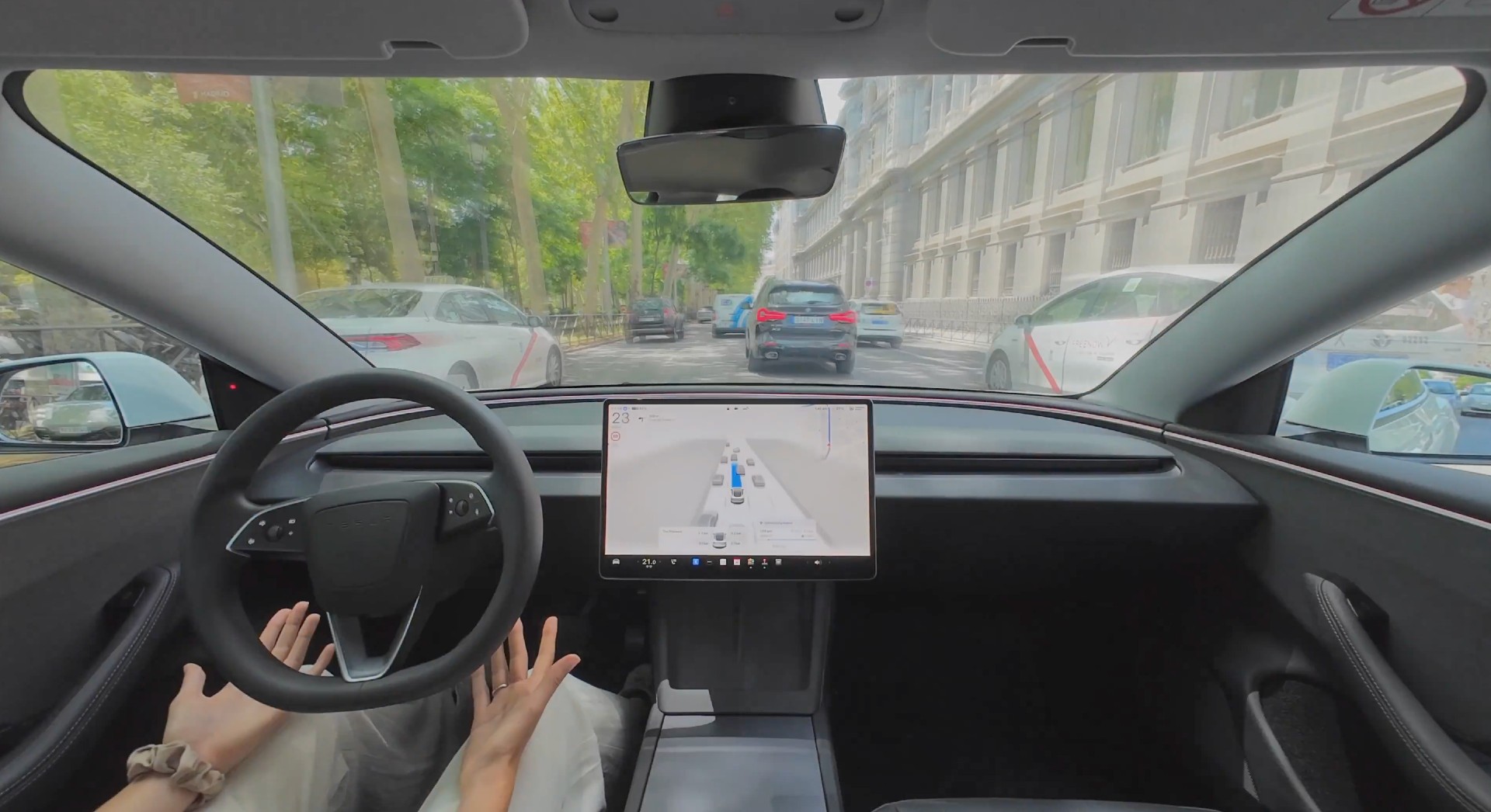
Tesla Full Self-Driving is being tested in several countries across Europe as the company prepares to launch its driver assistance suite on the continent.
The company is still working through the regulatory hurdles with the European Union. They are plentiful and difficult to navigate, but Tesla is still making progress as its testing of FSD continues to expand.
Today, it officially began testing in a new country, as more regions open their doors to Tesla. Many owners and potential customers in Europe are awaiting its launch.
On Thursday, Tesla officially confirmed that Full Self-Driving testing is underway in Spain, as the company shared an extensive video of a trip through the streets of Madrid:
Como pez en el agua …
FSD Supervised testing in Madrid, Spain
Pending regulatory approval pic.twitter.com/txTgoWseuA
— Tesla Europe & Middle East (@teslaeurope) July 3, 2025
The launch of Full Self-Driving testing in Spain marks the fifth country in which Tesla has started assessing the suite’s performance in the European market.
Across the past several months, Tesla has been expanding the scope of countries where Full Self-Driving is being tested. It has already made it to Italy, France, the Netherlands, and Germany previously.
Tesla has already filed applications to have Full Self-Driving (Supervised) launched across the European Union, but CEO Elon Musk has indicated that this particular step has been the delay in the official launch of the suite thus far.
In mid-June, Musk revealed the frustrations Tesla has felt during its efforts to launch its Full Self-Driving (Supervised) suite in Europe, stating that the holdup can be attributed to authorities in various countries, as well as the EU as a whole:
Tesla Full Self-Driving’s European launch frustrations revealed by Elon Musk
“Waiting for Dutch authorities and then the EU to approve. Very frustrating and hurts the safety of people in Europe, as driving with advanced Autopilot on results in four times fewer injuries! Please ask your governing authorities to accelerate making Tesla safer in Europe.”
Waiting for Dutch authorities and then the EU to approve.
Very frustrating and hurts the safety of people in Europe, as driving with advanced Autopilot on results in four times fewer injuries!
Please ask your governing authorities to accelerate making Tesla safer in Europe. https://t.co/QIYCXhhaQp
— Elon Musk (@elonmusk) June 11, 2025
Tesla said last year that it planned to launch Full Self-Driving in Europe in 2025.
Elon Musk
xAI’s Memphis data center receives air permit despite community criticism
xAI welcomed the development in a post on its official xAI Memphis account on X.
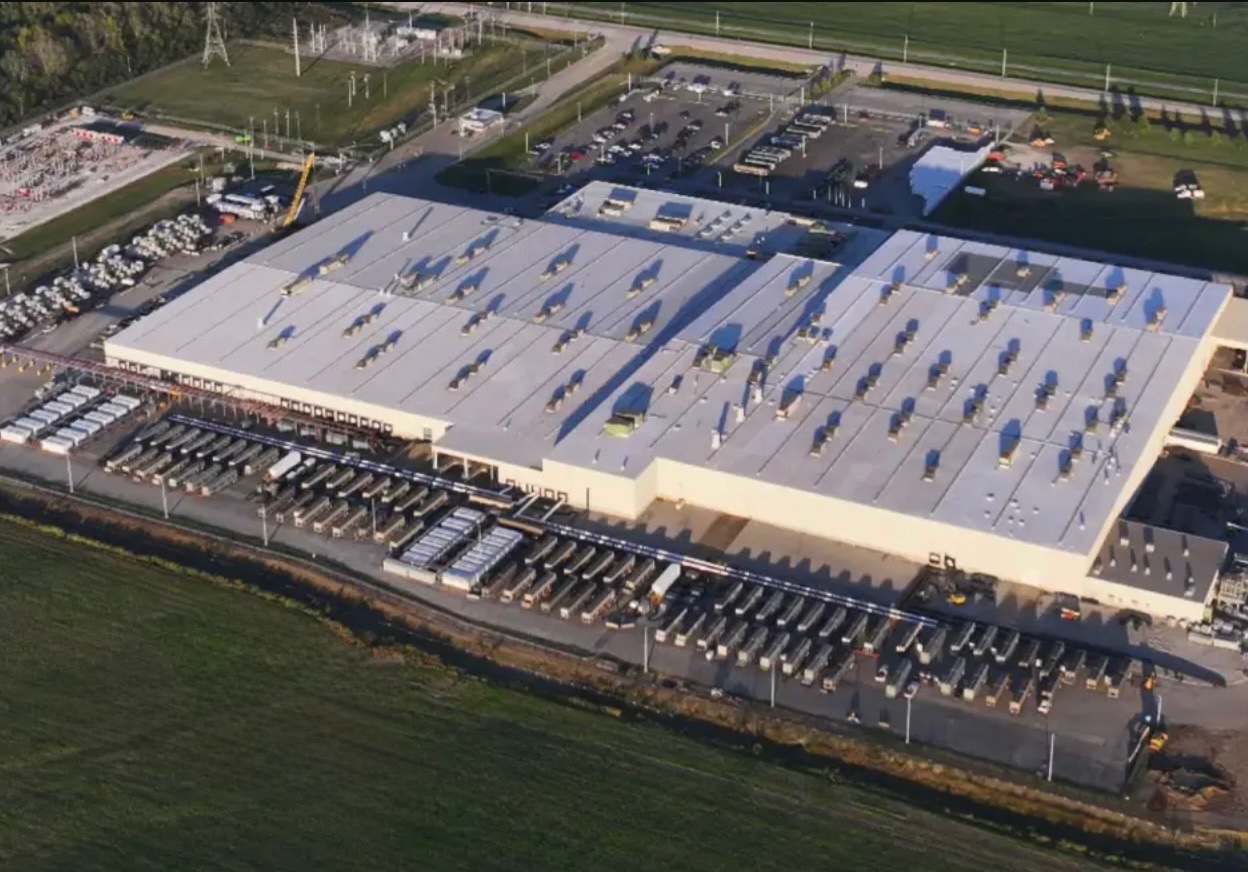
Elon Musk’s artificial intelligence startup xAI has secured an air permit from Memphis health officials for its data center project, despite critics’ opposition and pending legal action. The Shelby County Health Department approved the permit this week, allowing xAI to operate 15 mobile gas turbines at its facility.
Air permit granted
The air permit comes after months of protests from Memphis residents and environmental justice advocates, who alleged that xAI violated the Clean Air Act by operating gas turbines without prior approval, as per a report from WIRED.
The Southern Environmental Law Center (SELC) and the NAACP has claimed that xAI installed dozens of gas turbines at its new data campus without acquiring the mandatory Prevention of Significant Deterioration (PSD) permit required for large-scale emission sources.
Local officials previously stated the turbines were considered “temporary” and thus not subject to stricter permitting. xAI applied for an air permit in January 2025, and in June, Memphis Mayor Paul Young acknowledged that the company was operating 21 turbines. SELC, however, has claimed that aerial footage shows the number may be as high as 35.
Critics are not giving up
Civil rights groups have stated that they intend to move forward with legal action. “xAI’s decision to install and operate dozens of polluting gas turbines without any permits or public oversight is a clear violation of the Clean Air Act,” said Patrick Anderson, senior attorney at SELC.
“Over the last year, these turbines have pumped out pollution that threatens the health of Memphis families. This notice paves the way for a lawsuit that can hold xAI accountable for its unlawful refusal to get permits for its gas turbines,” he added.
Sharon Wilson, a certified optical gas imaging thermographer, also described the emissions cloud in Memphis as notable. “I expected to see the typical power plant type of pollution that I see. What I saw was way worse than what I expected,” she said.
-

 Elon Musk3 days ago
Elon Musk3 days agoTesla investors will be shocked by Jim Cramer’s latest assessment
-

 News1 week ago
News1 week agoTesla Robotaxi’s biggest challenge seems to be this one thing
-

 News2 weeks ago
News2 weeks agoTexas lawmakers urge Tesla to delay Austin robotaxi launch to September
-

 Elon Musk2 weeks ago
Elon Musk2 weeks agoFirst Look at Tesla’s Robotaxi App: features, design, and more
-
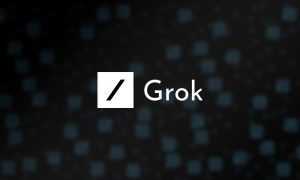
 Elon Musk2 weeks ago
Elon Musk2 weeks agoxAI’s Grok 3 partners with Oracle Cloud for corporate AI innovation
-

 News2 weeks ago
News2 weeks agoWatch Tesla’s first driverless public Robotaxi rides in Texas
-

 News2 weeks ago
News2 weeks agoSpaceX and Elon Musk share insights on Starship Ship 36’s RUD
-

 News2 weeks ago
News2 weeks agoTesla has started rolling out initial round of Robotaxi invites


